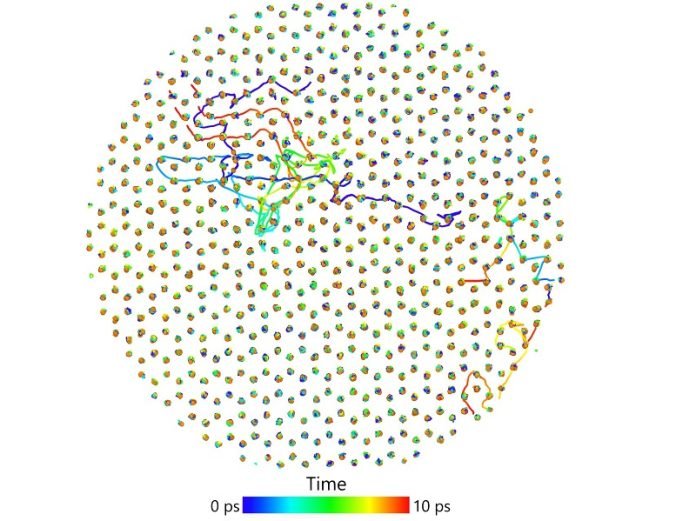
Beneath our feet, at the very center of our planet, something fascinating is happening.
Deep within the Earth, a dance of iron atoms reveals new secrets about the inner core that have mystified scientists for years.
The Earth’s solid inner core, though subjected to astronomical pressures, shows a surprising, and previously hidden, dynamic motion at the atomic level.
Envision the center of our Earth: a core of solid iron, pressed together under enormous pressures, the greatest found anywhere on our planet.
For years, scientists believed these atoms to be relatively static due to the intense conditions.
However, recent research led by The University of Texas at Austin, in collaboration with Chinese scientists, has uncovered a startling new understanding of the activities within this remote depth.
In an imaginative analogy, consider dinner guests at a table, discreetly changing seats without disrupting the overall arrangement and atmosphere of the gathering.
Similarly, groups of iron atoms in the Earth’s inner core, while maintaining their collective hexagonal structural arrangement, are engaged in a rapid, choreographed exchange of positions.
This phenomenon, dubbed “collective motion”, is now providing insightful clues into several intriguing aspects of the inner core that have baffled scientists, including its role in the geodynamo process that generates Earth’s magnetic field.
Jung-Fu Lin, a professor at the UT Jackson School of Geosciences and one of the study’s lead authors, illuminates the significance of understanding this mechanism, linking it to comprehending the dynamic processes and evolution of the Earth’s inner core.
But the direct study of the Earth’s inner core in its natural state is rendered impossible due to its inaccessible, extreme conditions.
To bypass this, Lin and the team devised an innovative experimental approach.
Imagine trying to recreate the conditions of the deepest part of our planet here on the surface. The researchers did exactly that, taking a petite iron plate and subjecting it to a high-velocity projectile impact.
Data on temperature, pressure, and velocity from the experiment were then fed into a machine-learning computer model, simulating atomic activities within the inner core.
Scientists have long theorized that the iron atoms in the inner core are systematically arranged in a hexagonal pattern. Historically, most computer models illustrating this atomic arrangement included only a modest number of atoms.
However, utilizing an artificial intelligence algorithm, the researchers magnified their model to a “supercell” containing approximately 30,000 atoms, thereby enabling a more accurate prediction of iron’s properties at such depth.
This enhanced model unveiled the previously unknown atomic dance, revealing clusters of atoms perpetually and swiftly changing places, yet preserving the overall hexagonal structuring.
Co-lead author Youjun Zhang, a professor at Sichuan University, related the soft and malleable conditions of the inner core, as indicated by seismic measurements, to an unexpected finding: “The big discovery that we’ve found is that solid iron becomes surprisingly soft deep inside the Earth because its atoms can move much more than we ever imagined.”
This enigmatic atomic activity, presenting a lesser rigidity and weakened resilience against shear forces in the inner core, potentially unlocks explanations for seismic data that have puzzled scientists.
Furthermore, it elucidates approximately half of the geodynamo energy responsible for Earth’s magnetic field, offering fresh perspectives on the generation and dissipation of energy and heat within the inner core, and their interaction with the outer core to produce our planet’s magnetic shield.
In this lively atomic ballet, we see not just atoms in motion but a vibrant, dynamic system that has been secretly shaping our planet from the inside out.
This discovery doesn’t merely reveal hidden aspects of our world; it reshapes our understanding of the Earth beneath us, turning a seemingly solid, static core into a dynamic, living entity that contributes to making our planet habitable.
As science peels back more layers of the Earth’s mysteries, we continue to dance in rhythm with the ever-expanding boundaries of discovery and understanding.
Follow us on Twitter for more articles about this topic.
Source: University of Texas at Austin.



